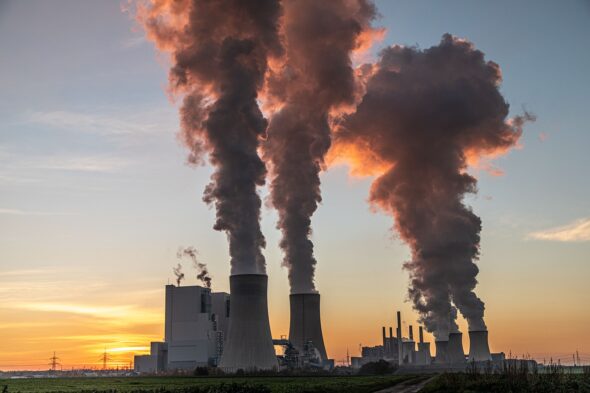When the wind stops blowing or the sun goes down within minutes, the power generated in the renewable system plummets very quickly. The existing sources, mainly coal, should be able to quickly fill in this gap. This is why the 200+ Units Program was developed. Its goal is to design a technology that would modernize the 200 or 360 MW units, so that they could stabilize the grid and at the same time ensure compliance with strict environmental requirements at a level that would ensure their exploitation at least until 2035 – write Maciej Chorowski, head of the National Centre for Research and Development between 2016 and 2019 and Michał Kurtyka, former Minister of Climate and the Environment, co-creators of the 200+ Units Program.
The total installed capacity in the Polish power system is about 55,000 MW, of which a little less than half are coal-fired power plants. Built since the middle of the last century, when Poland was undergoing electrification and industrialization, they operate with a long start-up time and low tolerance for changes. Once up and running, they work best in long cycles and at capacity close to maximum. And that’s the problem. Renewable sources are quickly gaining ground in the Polish power system, closing in on almost 18 GW, but their performance hinges on the weather. This means that as the share of RES increases, the system is starting to lack balancing sources, that can be turned on quickly. When the wind stops blowing or the sun goes down within minutes, the power generated in the renewable system drops very quickly. The existing sources, mainly coal, should be able to quickly fill in this gap. This is why the 200+ Units Program was developed. Its goal is to design a technology that would modernize the 200 or 360 MW units, so that they could stabilize the grid and at the same time ensure compliance with strict environmental requirements at a level that would ensure their exploitation at least until 2035. Considering the fact that Poland has about 60 units in this class, out of which the first one was built in 1961 and the last one in 1983, and that today about 40 are still in operation, the modernization potential of these units reaches even 8,000 MW. According to conservative estimates, 25 units would be upgraded, so only about 5,000 MW would stay in the system to play the role of the stabilizer, which would support the volatile renewable sources.
This is why the 200+ Units Program was developed. The Program, implemented by the National Centre for Research and Development, was a precursor in terms of research methodology. For the first time in Poland, the approach used by American research agencies, primarily DARPA, was used. According to this method, the research needs a well-defined and measurable goal, a time horizon in which it will be achieved, and openness to all entities that have a promising outlook on solving the problem.
The aim of the 200+ MW Units Program was to develop a low-cost technology for upgrading coal-fired power plants of the 200 MW and 360 MW classes, allowing them to adapt to new operating regimes. This means, the units should be moved from being baseload plants to peaking plants, and adapted to perform system services for the Polish Grid. The measurable indicators of achieving the goal were the start-up times of the blocks from the cold state, emissions of selected substances, thermodynamic efficiency during operation. The terms of the competition did not impose or suggest specific technical solutions. Instead the potential contractors were allowed to make decisions about the degree of interference in the mechanical structures of the blocks, the modification of control systems or the use of artificial intelligence. Work on the implementation of the „DARPA” research programs started at the NCBR in 2016. The 200+ Units Program was launched in 2017. It had to be adapted to Polish legal procedures for research financing aimed at achieving a specific goal and not excluding any potential contractors, for instance, due to the legal formula of a business entity.
In 2019, the final phase of the 200+ Unitss Program began, in which three contractors took part: the Scientific and Technical Services Company Pro Novum from Katowice; a consortium of Rafako and its subsidiary Rafako innovation; and a consortium consisting of Polymex Mostostal, Transition Technologies, Energoprojekt-Warsaw, and Warsaw University of Technology. The solutions proposed by them to varying degrees interfered with the construction of the units, used different diagnostic and IT methods. For this reason, the contractors had different budgets-from 86.5 million for Rafako, through 62.4 million for the Polymeks Mostostal consortium to 12.4 million for Pro Novum. Initially, the completion of the program was planned for 2021, but due to the pandemic it was delayed by 12 months. All finalists upgraded selected 200+ units in line with their own ideas. The Rafako consortium made its changes at the Jaworzno Power Plant owned by Tauron. The other two contestants tried out their ideas at the Połaniec Power Plant owned by Enea. The measurements conducted under the supervision of the Program’s technical advisor – the Polish Power Plants Association (TGPE) – confirmed that the targets have been reached. Thus, it has been proven it is possible to transfer 200 and 360 – class units from the baseload to the peaking system while maintaining environmental standards and high thermodynamic efficiency at least until 2035. These blocks, especially after the policy of hooking Western Europe on Russian gas collapsed, will be necessary to transform Poland’s energy system. This is in line with the Polish Energy Policy until 20240 which, despite recent turbulence, remains fundamentally valid. In particular, it is important to create the possibility of installing new RES capacities and compensating their instability with controllable capacities. It is equally important that until the construction of nuclear power plants in Poland, the power guaranteed by the upgraded units remains in the system.
The success of the just completed 200+ Units Program has several dimensions. Firstly, the National Centre for Research and Development has proven that in Poland it is possible to carry out research aimed at well-defined goals of economic importance, just like it is done by US agencies – DARPA, ARPA or ARPA-E. We are not doomed to the search for mythical innovation through financing research that won’t ever be used by anyone.
Secondly, the program confirmed that the 200 MW units, which are often dismissed by the industry, are not a burden despite the planned decarbonization, on the contrary, they may actually make it possible. In other words, despite the often full depreciation, these units have a specific capital value that allows them to develop high capacity that can be used to balance the system. TGPE estimates that, thanks to the upgrades, it will be possible to obtain at least 5 GW of available capacity until 2035, with individual investments of PLN 50-70 million for the 200 MW blocks and PLN 70-100 million for the 360 MW units. These expenditures represent between 5 and 10 percent of the cost of building new balancing capacities in other technologies.
Third, the upgrades can be started right away, thanks to the formula of the 200+ Units Program. Three contractors are ready to do it. The upgrades could be performed simultaneously for various units and be completed by 2025. Time is the challenge. The upgrade of the units may be undermined by the lack of quick decisions, continued technical depreciation of these units, the wait for the National Agency for Energy Security to be fully established, lack of understanding as to the gist of the program, fear that if something doesn’t cost much and is based on Polish technical ideas it cannot work. On the other hand, the opportunity lies in the fact that if we reached a consensus when it comes to military security, we might as well agree on our energy security. As a result, the 200+ Unit Program, crucial for the transformation of our energy sector, will be excluded from the usual in-fighting over intests.









